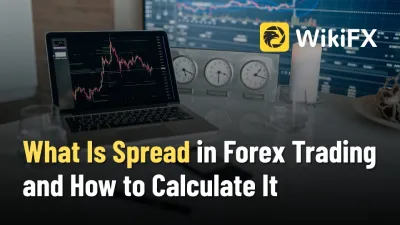What Is Spread in Forex Trading and How to Calculate It
Spread Meaning in Forex Guide: Forex spread defines the bid-ask price differential, representing the cost of entering a trade instantly.
简体中文
繁體中文
English
Pусский
日本語
ภาษาไทย
Tiếng Việt
Bahasa Indonesia
Español
हिन्दी
Filippiiniläinen
Français
Deutsch
Português
Türkçe
한국어
العربية
Abstract:An exploration of how AI and machine learning are being used to generate more accurate and reliable forex signals.

Forex trading is one of the most dynamic and complex markets in the world. Every day, trillions of dollars are exchanged between traders and investors, with currencies fluctuating in value at an incredibly rapid pace. This means that forex traders need to have access to the most up-to-date information possible in order to make informed decisions about their trades. This is where artificial intelligence (AI) and machine learning (ML) come in.
AI and ML are revolutionizing the world of forex trading by providing traders with more accurate and reliable signals. In this article, we will explore how AI and ML are being used to generate these signals and how they are changing the landscape of forex trading.
Forex signals are alerts or indicators that are used to signal the best time to buy or sell a currency pair. These signals are generated by a variety of methods, including technical analysis, fundamental analysis, and sentiment analysis. Technical analysis involves the use of charts and statistical indicators to identify trends in the market. Fundamental analysis involves looking at economic and political factors that may affect currency values. Sentiment analysis involves analyzing social media and news sources to gauge the overall mood of the market.
On the otherhand,
WikiFX as a provider of all the needs to a forex traders has a variety of VPS and EA to choose from with a price of cheaper than a cup of coffee.

You can check out the link below for WikiFX VPS store for more details
VPS: https://vps.wikifx.com/en/vps.html?source=fma3
EA: https://vps.wikifx.com/en/eashop.html?source=fma3
AI and ML are being used in forex trading to help traders make better decisions based on more accurate and reliable data. By analyzing large amounts of data from various sources, AI and ML algorithms can identify patterns and trends that human traders may not be able to detect. These algorithms can also learn from their own mistakes and adjust their strategies accordingly, which means they can continually improve their accuracy over time.
One of the most significant benefits of using AI and ML in forex trading is that these technologies can process large amounts of data much faster than humans can. This means that they can quickly analyze market trends and identify patterns that could be missed by human traders. Additionally, AI and ML algorithms can work 24/7, which means that they can provide traders with signals even when they are not actively monitoring the market.

AI and ML algorithms are used to generate forex signals in a variety of ways. One of the most common methods is to use neural networks, which are computer systems that are designed to mimic the way the human brain works. Neural networks can analyze vast amounts of data and identify patterns and trends that are difficult for humans to detect.
Another method used to generate forex signals is deep learning. Deep learning is a subset of machine learning that involves training algorithms on large datasets to recognize patterns and make predictions. Deep learning algorithms can be used to analyze a variety of data sources, including news articles, social media posts, and financial statements, to identify patterns that could affect currency values.
Finally, natural language processing (NLP) is being used to analyze news articles and social media posts to identify sentiment and determine how it may affect the forex market. NLP algorithms can analyze millions of articles and posts in real-time to identify patterns and trends that may be missed by human traders.
The benefits of using AI and ML in forex trading are numerous. These technologies can help traders make better decisions based on more accurate and reliable data, which can lead to higher profits and reduced losses. Additionally, AI and ML algorithms can work 24/7, which means that they can provide traders with signals even when they are not actively monitoring the market.
Another benefit of using AI and ML in forex trading is that these technologies can help traders overcome emotional biases. Human traders may be swayed by emotions such as fear and greed, which can lead to poor decision-making. AI and ML algorithms, on the other hand, are not influenced by emotions and can make decisions based solely on data.
Finally, AI and ML algorithms can learn from their own mistakes and adjust.
Install the WikiFX App on your smartphone to stay updated on the latest news.
Download link: https://www.wikifx.com/en/download.html?source=fma3

Disclaimer:
The views in this article only represent the author's personal views, and do not constitute investment advice on this platform. This platform does not guarantee the accuracy, completeness and timeliness of the information in the article, and will not be liable for any loss caused by the use of or reliance on the information in the article.

Spread Meaning in Forex Guide: Forex spread defines the bid-ask price differential, representing the cost of entering a trade instantly.

Allied Top review: Covering regulation, trading platforms, leverage, spreads, deposits, and real trader feedback for informed decisions.

Global broker STARTRADER refreshes its brand identity, reinforcing trust, growth, and client focus through a modernized visual and strategic repositioning.

Dear Global Users, Thank you for journeying alongside WikiFX. Every query you make, every review you share, and every piece of feedback you provide serves as the most vital driving force behind our continuous efforts to promote transparency and security in the trading industry.
